Introduction: The Eye That Sees
Before you had a name, a history, or even a thought, there was simply looking. Not looking in the sense of two eyes focusing on the world, but a more fundamental kind of perception – awareness itself.
This awareness didn’t belong to anyone. It wasn’t “yours” yet. It wasn’t tied to a body or a voice or even the idea of “self.” It just was.
We tend to think of life as beginning with the body – the tiny beating heart, the growth of senses, the wiring of the brain. But there’s another way to see it: maybe the body isn’t what creates awareness, but simply the temporary stage it plays upon. If that’s true, then your personal story – your name, your struggles, your triumphs – isn’t the beginning at all. It’s one frame in a film that has been rolling long before you, and will keep rolling long after.
Awareness vs. What You Think You Are
As you read these words, something is noticing them. That “something” isn’t the thoughts forming in your head, or the subtle voice that reads silently in your mind. It’s the silent backdrop behind all of that – the presence that’s aware of thoughts, feelings, and sensations.
We confuse awareness with what happens inside it. We assume the story on the screen is the same as the screen itself. But awareness is like that blank cinema screen: no matter what movie plays – joy, sorrow, boredom, or ecstasy – the screen doesn’t change.
Think about your sense of “I.” You say “I am tired,” “I am excited,” “I am lost,” as though the “I” is fused with whatever feeling is present. But what if that “I” – your personality, your history, your desires – is not the foundation, but a layer? A costume that awareness wears for a while.
The Illusion of Being Separate
Most of us live as if we are isolated beings, trapped inside bodies, peering out at a world made of objects. This sense of separation feels so real, so natural, that it’s almost impossible to question. Yet if awareness exists before identity, then maybe the whole idea of being “separate” is only part of the illusion.
Imagine standing at a window. From inside, the world looks framed – one small square of sky, a patch of tree, a corner of the street. You assume the view is limited because you are limited. But step outside, and the whole horizon is open.
Your body and your mind may be nothing more than that window frame. Awareness itself is not bound by it. What you call “me” is simply one angle, one viewpoint, one way of looking.
Before Identity, Only Perspective
Now, imagine stripping everything away. Your name. Your language. Your memories. The sensations of your body. The very idea of “being someone.”
What’s left?
Pure perspective. An unshaped awareness, like an open field. No story. No history. No anchor. Just the capacity to see, to know, to experience.
Language cannot capture this fully, because language is built on separations – subject and object, “me” and “you,” “here” and “there.” But if you pay close attention, you may catch small moments when the layers of identity loosen: in silence, in awe, in love, even in exhaustion. In those moments, the “self” disappears, and only experience remains.
The Lens That Can Shift
If awareness is not tied to a single self, then maybe it can shift. Just as a camera can change position, capturing the same scene from another angle, awareness may look out from different bodies, different identities, different points in time.
From the perspective of the story called “you,” death feels like an ending. But from the perspective of awareness itself, death may be no different than turning the camera toward another view. The movie changes, but the screen remains.
This idea doesn’t need to be mystical. Think about dreams: every night, you live inside entirely different worlds, with different identities, different rules. You don’t notice the transition while it’s happening. You simply wake up and realize you were never “stuck” in the dream after all. What if death – and life itself – work in a similar way?
Why You Never See Behind Yourself
Here’s a subtle clue about perspective that most people overlook: you can never see the back of your own head. Even with mirrors, you’re still looking at a reflection – something in front of you, not truly behind.
Why? Because the “self” isn’t an object in space. It’s a point of view. A point of view cannot turn around to see itself directly. It can only face outward.
This isn’t a flaw – it’s the structure of perception. The “self” is not what’s being seen, but the act of seeing itself.
A Foundation for the Journey Ahead
This chapter isn’t here to prove or disprove grand theories. It’s here to plant a seed: maybe awareness doesn’t begin and end with the life you call “yours.” Maybe it’s the other way around – your life happens inside awareness, a much larger field that isn’t bound to a single story.
If that’s true, then the question shifts from:
“Who am I?”
to:
“Who – or what – is doing the looking?”
In the chapters ahead, we’ll explore the implications of this shift. What happens if identity is only temporary? What if death is only a turning of the lens? Why do we feel so separate, when awareness itself may be indivisible?
These aren’t abstract puzzles. They change the way you live, the way you love, and the way you face endings. For now, simply hold the possibility: before the story of “you” began, there was already perspective. And perhaps – when this story ends – perspective will remain.

